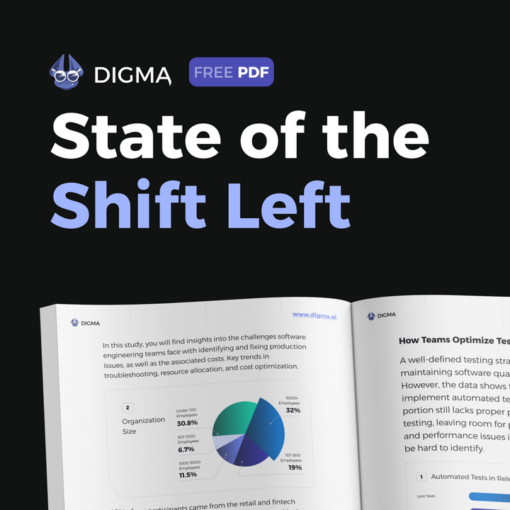Preparing for JDK 21: A Comprehensive Overview of Key Features and Enhancements
- August 02, 2023
- 9660 Unique Views
- 3 min read
As we inch closer to the release of JDK 21 in September (next month!), it's crucial to familiarize ourselves with the transformative features and improvements this version is poised to bring to the Java ecosystem.
Let's embark on a comprehensive tour of the noteworthy changes and enhancements in JDK 21.
Revising the Balance of Serviceability and Performance with JEP 451
Let's begin with JEP 451, "Prepare to Disallow the Dynamic Loading of Agents." Graduating to Completed status in preparation for JDK 21, this proposal doesn't ban the dynamic loading of agents into a running JVM outright. Instead, it issues warnings when such loading happens, preparing the terrain for a future JDK release that will disallow such loading by default.
The proposal aims to strike a new balance between serviceability and integrity, offering improved security without impacting most tools that do not require dynamic loading of agents.
Learn more about JEP 451 here.
Revolutionizing Cryptography on OpenJDK with JEP 452
JEP 452, "Key Encapsulation Mechanism API," is another important feature in JDK 21. It ushers in a modern encryption technique used for securing symmetric keys with public key cryptography.
The new Key Encapsulation Mechanisms (KEMs) API strengthens the cryptographic resilience of Java applications against quantum attacks, simplifying the process of securing symmetric keys and eliminating the need for padding.
Discover more about this feature here.
Taking Z Garbage Collector (ZGC) to the Next Level with JEP 439
Improving application performance, JEP 439, "Generational ZGC," is set to enhance the Z Garbage Collector (ZGC) by introducing separate generations for young and old objects.
This upgrade aims to lower allocation stall risks, decrease the necessary heap memory overhead, and reduce garbage collection CPU overhead without significant throughput reduction.
Read more about the enhancements to ZGC here.
Enhancing Language Expressivity with JEP 441 and JEP 443
JDK 21 introduces notable enhancements to Java's expressivity. JEP 441, "Pattern Matching for switch," extends pattern matching capabilities to switch expressions and statements, enhancing the language's expressiveness and safety.
On the other hand, JEP 443, "Unnamed Patterns and Variables (Preview)," introduces unnamed patterns and variables. This preview feature aims to simplify data processing, especially when working with record classes.
You can find out more about these language enhancements here and here.
Sequenced Collections now a Reality: JEP 431
Now reaching Completed status in JDK 21, JEP 431 introduces a significant refinement to the Java collections framework. This proposal brings to life new interfaces representing collections with a defined sequence or ordering, meeting a longstanding need.
With these enhancements, collections now offer uniform access to their first and last elements and the ability to process elements in reverse order.
More about JEP 431 and the enhancement of sequenced collections here.
Rendering Java More Accessible to Beginners with JEP 445
JEP 445, "Unnamed Classes and Instance Main Methods (Preview)," is specifically designed to render Java more beginner-friendly. This proposal acknowledges the initial challenges faced by beginners and provides them with a more accessible avenue to writing their first programs.
Learn more about these beginner-friendly features here.
Boosting Java's Expressivity with JEP 440 and JEP 430
JDK 21 continues to enrich Java's expressivity with JEP 440, "Record Patterns," and JEP 430, "String Templates (Preview)." JEP 440 introduces record patterns to deconstruct record values, allowing for a powerful, declarative, and composable form of data navigation and processing.
Meanwhile, JEP 430 enriches Java's string literals and text blocks with string templates, simplifying program creation, enhancing readability, and boosting security.
Explore more about record patterns here and string templates here.
Revolutionizing Concurrency with JEP 444
JEP 444, "Virtual Threads," introduces virtual threads to the Java platform, a game-changer for high-throughput concurrent applications.
Virtual threads are lightweight and efficient, enabling developers to handle a large number of tasks with significantly less overhead than traditional platform threads.
You can find more about virtual threads here.
Streamlining Concurrent Programming with JEP 453
JEP 453, "Structured Concurrency (Preview)," graduates from an incubating API to a preview feature in JDK 21.
This proposal introduces an API that considers a group of related tasks running on different threads as a single unit of work, making concurrent programming more straightforward and reliable.
Get more details about structured concurrency in JDK 21 here.
Conclusion
In conclusion, JDK 21 brings a host of new features and improvements that will significantly enhance the Java ecosystem.
These changes, which span across serviceability, modern cryptography, garbage collection, pattern matching, code simplification, beginner-friendly updates, concurrency handling, record class enhancement, and the introduction of string templates and virtual threads, promise to deliver more efficient, secure, and high-performing Java applications.
Whether you're a beginner just getting started with Java or an experienced developer looking to optimize your programs, JDK 21 offers something valuable for everyone.
For more in-depth information on each of these enhancements and to keep up-to-date with JDK 21's features, please visit the official OpenJDK page here.
Stay tuned to learn more about these exciting changes as we explore them in future posts.
The hidden costs of production issues: Insights from 280 developers
Our latest State of Shift Left study, based on input from 280 developers, highlights key trends in testing, troubleshooting, and cost optimization.
Get the Study
Don’t Forget to Share This Post!













Comments (0)
No comments yet. Be the first.